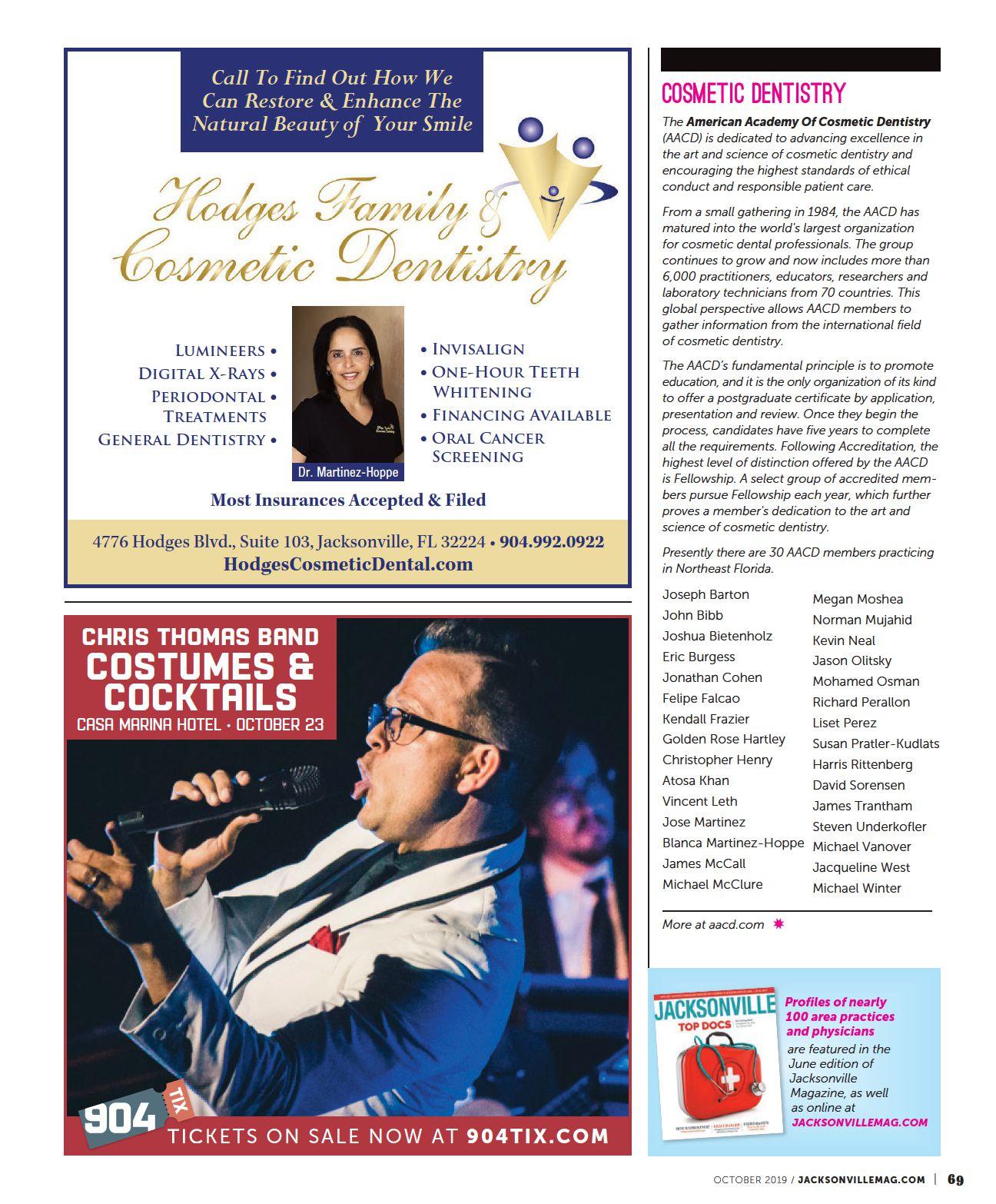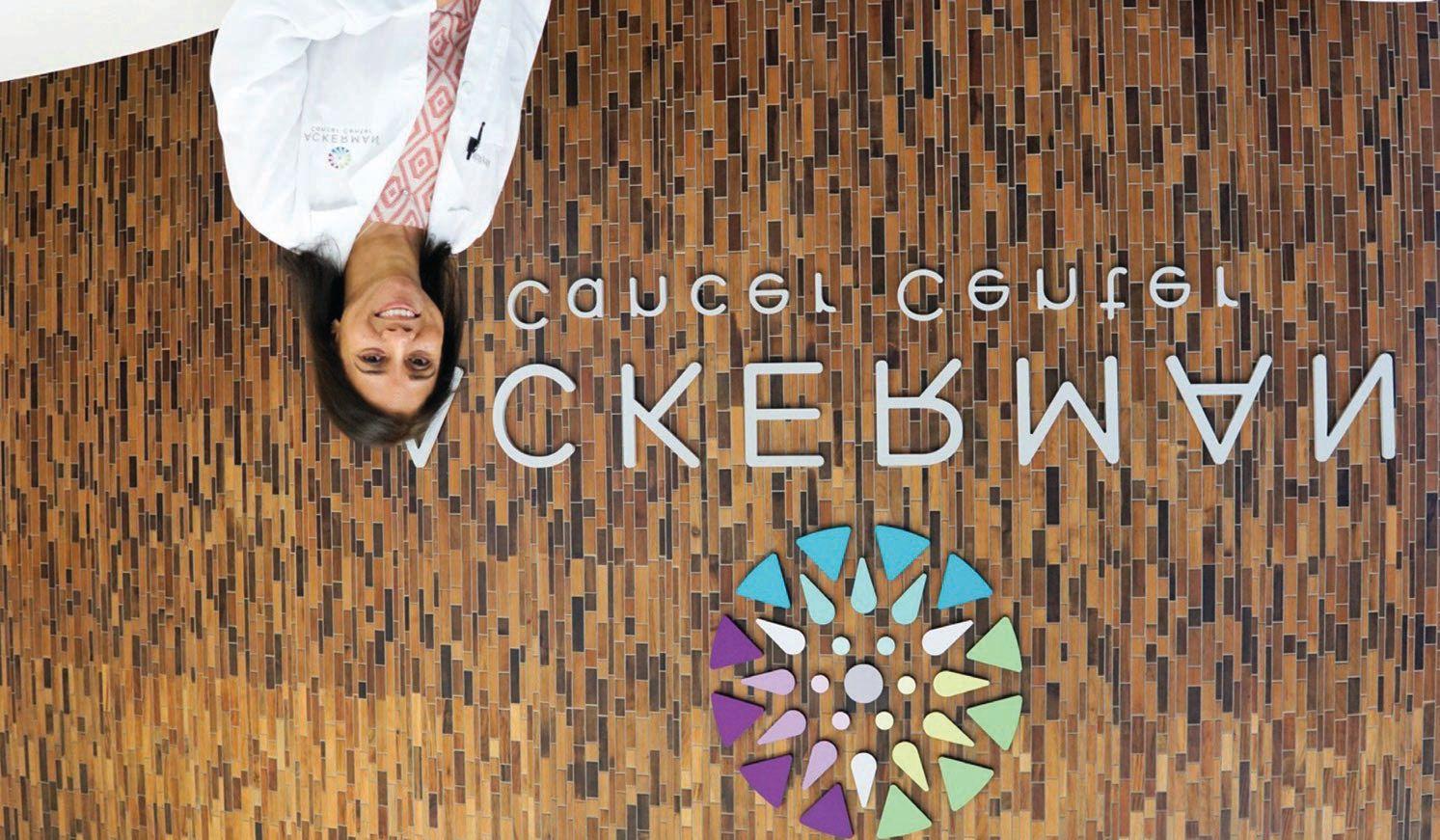
28 minute read
It’s a Woman’s World
IT’S A WOMAN’S WORLD Living your best life starts with self-care.
AND WHETHER YOUR “BEST LIFE” ENTAILS SHATTERING A GLASS CEILING, RAISING A FAMILY, OR ALL OF THE ABOVE, SELF-CARE MEANS MAKING HEALTH A PRIORITY. That’s why this year’s women’s issue offers a specific focus on women’s health—from how to maintain a healthy smile to what to expect from in vitro fertilization. You’ll also find lists of local physicians who specialize in women’s medicine and care and the results of our annual Fabulist, a poll on the best in Jax, voted for by local women.
Babita Jyoti, M.D. // ACKERMAN CANCER CENTER
BABITA JYOTI, M.D., A FELLOW OF THE ROYAL COLLEGE OF Radiologists, is one of the first physicians in the United States to complete a fellowship in both pediatric and adult proton therapy. Before moving to Florida, she completed her Internal Medicine residency in Manchester, England, followed by a dual residency program in Medical Oncology and Radiation Oncology at the Clatterbridge Cancer Center, UK. Like everyone at Ackerman Cancer Center, Dr. Jyoti strongly believes in providing outstanding, patient-focused care. Her clinical interests include breast cancer, pediatric cancers, and central nervous system tumors.
What do you want patients to know about Ackerman Cancer Center? From the moment you walk through our doors, you will work with a team of radiation oncologists, oncology-certified nurses, oncology social workers, dieticians, and financial resource counselors who are focused on you and your unique needs. To ensure you receive timely answers, we offer same-day or next-day appointments and immediate results. Our physicians always review your test results with you. We collaborate with other physicians, both at Ackerman and at other facilities in our community, to build the best care team possible for each individual case. You will always receive the information, support, and compassion needed to successfully navigate your treatment.
Tell us about your breast care program. We are proud to offer all women in Northeast Florida access to our comprehensive Breast Care Program, which includes screening and diagnostic mammograms, breast ultrasounds, and ultrasound-guided breast biopsies, all overseen by our radiologist who specializes in breast care. For women diagnosed with breast cancer, we provide all modalities of radiation therapy, including proton beam therapy. Our goal is to achieve early detection, diagnosis and treatment of breast cancer to give our patients the best potential for a cure.
What is proton therapy and why is it recommended for breast cancer patients? Proton therapy is an advanced form of radiation that precisely targets tumors, significantly reducing radiation exposure to the surrounding healthy tissues and organs. This directly translates to fewer side effects and better quality of life during and after treatment. For women with breast cancer, treatment with proton therapy reduces the risk of future heart disease, heart attack, and chronic pulmonary disease, which can be related to all forms of breast cancer treatment— especially for left-sided breast cancers which are nearer to the heart.
As a female doctor specializing in cancer treatment, what is key advice you would give other women? I would stress the importance of regular screenings and self-checks. You know your body better than anyone else and any change should be noted. Changes in skin texture or breast shape should be brought up to your doctor. Understanding your family history of cancer can help your doctor create a screening guide that is best for you. Knowing your health story and talking to your healthcare providers can empower you to make informed choices and to take an active role in decision making.
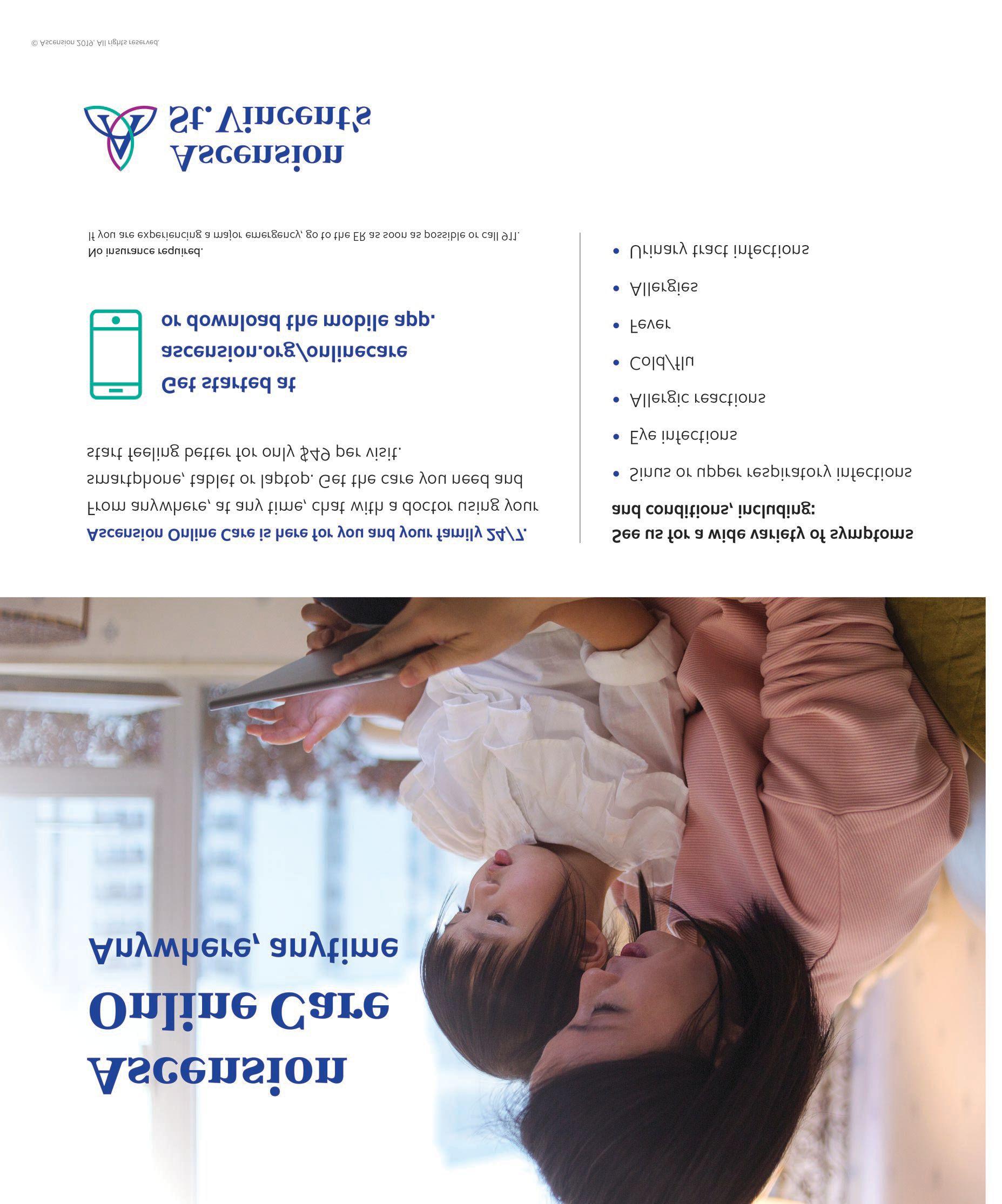

LET’S TA-TA-TALK ABOUT IT
It’s an overused phrase but it does ring true: the best protection is early detection, certainly when it comes to breast cancer. We spoke to a roster of local experts—Dr. Beth-Ann Lesnikoski, director of the breast program at Baptist MD Anderson Cancer Center, Trishna Patel, radiologist with Baptist MD Anderson, and Gaelyn Scuderi, MD, diagnostic radiologist of Ackerman Cancer Center—for the facts on DIY testing, mammograms, and biopsies.
BY CAMERON ROGERS
HEALTHY BREAST TISSUE VS. WORRISOME BREAST TISSUE Dr. Scuderi: Because breast tissues are naturally lumpy and bumpy, it can be difficult or even impossible for women—and even seasoned physicians—to find breast cancer with a physical exam. Also, by the time a breast cancer can be felt, it is often larger and more advanced than cancers detected by screening mammography. This is why getting an annual mammogram is so important for average-risk women age 40 and older. In those circumstances where breast cancer is palpable on physical exam, the cancer is often harder or more firm than the surrounding breast tissues, and there may be skin findings such as a thickened, orange peel appearance to the skin, a visible dimple or cleft, or a red rash.
DO-IT-YOURSELF TESTING Dr. Scuderi: Breast self-examination is a debated practice. Historically, women were recommended to undergo a clinical breast exam by a medical provider on an annual basis, and perform a self-exam of their own breast tissues once a month, beginning in their 20’s. But research has shown no clear benefit for both clinical and self-breast exams in the detection of breast cancer. In fact, the American Cancer Society and the U.S. Preventative Services Task Force no longer recommend these practices as a part of routine women’s health care. Other groups, such as the American College of Obstetricians and Gynecologists (ACOG) and the National Comprehensive Cancer Network (NCCN) continue to recommend at least offering clinical breast exams every 1-3 years for women ages 25-39 and annually for women age 40 and above. As a part of my breast imaging practice, I frequently perform clinical breast exams for women who are undergoing imaging tests for breast-related symptoms, because the physical exam can augment the breast imaging assessment. For instance, if the imaging workup is equivocal but I find a suspicious lump on physical exam, I would recommend biopsy as opposed to follow-up imaging. It’s important to understand that both breast physical exams and breast imaging tests are imperfect, but they are both more powerful when used in combination. I also continue to recommend breast self-awareness with all my patients. I have seen many patients who are diagnosed with breast cancer after discovering a lump at home. It’s important that women examine themselves often enough to know how their own breast tissues usually feel. I encourage women to be advocates for their own health, and stay alert for early signs of breast cancer.
WHEN TO PERFORM A SELF-BREAST EXAM Dr. Scuderi: All breast tissues are lumpy to some degree, but the
nodular texture of the breasts on a physical exam is often increased in the mid to latter portion of the menstrual cycle. Lumps and bumps are less prominent during the first one to two weeks of the menstrual cycle, so this is the optimal time to perform self-exam.
TESTS AND TOOLS THAT ARE USED TO FIND THE CANCEROUS CELLS OR TUMOURS IN THE BREAST Dr. Patel: Imaging exams including mammograms, ultrasounds, and MRIs are used to screen women for breast cancer when they don’t have any signs or symptoms. A mammogram is one of the most well-known tools. There are two different types of mammograms—screening and diagnostic mammograms. Women 40 years or older are recommended to have a screening mammogram performed annually. Even if you don’t have a family history of breast cancer, it’s a good idea to get a screening mammogram as most breast cancers occur in women without a family history. Traditional 2D screening mammograms take one picture across the entire breast, in two directions: top to bottom and side to side. Unclear or suspicious findings from 2D views may need additional imaging and also lead to more false positives, when a mass on the image looks cancerous but turns out to be benign. A more technologically advanced mammogram option is 3D mammography (digital breast tomosynthesis), which is approved by the FDA and is quickly becoming the standard of care for breast cancer screening. 3D screening mammography makes it easier to see the layers of breast tissue, allowing for better cancer detection. It moves in an arc around the breast to take X-ray pictures from many angles in seconds. A computer quickly assembles the pictures to produce clear, highly focused images. This allows the radiologist to view the entire breast, layer by layer, for a more accurate screening—especially important for anyone with dense breast tissue or patients with an increased risk of breast cancer. Diagnostic mammograms are used if a patient has concerning signs or symptoms of breast cancer or if a radiologist sees a finding on a screening mammogram that requires additional imaging. The additional images can provide a more detailed view of the breast. Dr. Lesnikoski: Breast imaging and clinical exams can detect tumors in the breast but only a biopsy, such as fine needle aspiration biopsy, core needle biopsy, or surgery can give us tissue for a pathologist to detect cancerous cells under the microscope.
WHAT IF YOU DON’T NEED A BIOPSY, BUT YOU WANT ONE? Dr. Lesnikoski: Yes, a woman can request a biopsy, even if she has been told she does not need one. In a case like this, the patient would be referred to a breast specialist, who would review the risks and benefits of biopsy. There are rare occasions when a biopsy is not technically possible—this occurs when there is nothing that the patient or clinician can feel, and routine 2D mammography sees a lump or area of concern in only 1 of 2 views. In this case, other breast imaging techniques, like 3D mammography, ultrasound or MRI are used to find the area. If it is found, a needle biopsy can be performed with an imaging technique that sees the area the best. If it is not found, the only alternative is to follow up with a diagnostic mammogram every six months for two years to be sure that the area does not evolve into a problem.
FOR WOMEN WHO ARE PREGNANT, BREASTFEEDING OR DISABLED Dr. Scuderi: Women who have breast-related symptoms and are pregnant, breastfeeding, or disabled should undergo a breast imaging evaluation which may include mammography, ultrasound, or a combination of the two. The exact exam will be individually tailored to the patient, depending on the nature of the patient’s breast symptoms, individual history and existing medical conditions. Pregnant patients can be reassured that mammography poses no significant risk to the developing fetus, as precautions would be taken during the exam to shield the abdomen and pelvis from the extremely low levels of radiation used to take the mammogram image. Similarly, lactating patients should know that cessation of breastfeeding is not required for the performance of either mammography or ultrasound.
GUYS, YOU’RE NOT ENTIRELY OFF THE HOOK. Dr. Lesnikoski: Risk of breast cancer in males with the BRCA2 gene mutation is 8% over the course of their lifetime. For patients with no family history of male or female breast cancer, the risk is well under 1%. Less than 1% of all breast cancers are in males, even accounting for BRCA2 mutation carriers, since the risk of carrying this gene is extremely low. u
HELLO BABY
What (and when) to expect with IVF
BY CASEY CRAIG
FOR MORE THAN 40 YEARS, IN VITRO FERTILIZATION (IVF) HAS GIVEN WOMEN STRUGGLING TO CONCEIVE A GREATER CHANCE AT BECOMING PREGNANT. This landmark procedure also allows women more reproductive freedom on when they can have children—and is often used in surrogate pregnancies. But IVF can come with some puzzling misconceptions: many people imagine the procedure as scientists throwing in eggs and sperm in a test tube and—with some magic and medical wizardry—ta-dah!—here’s your baby. If only it were that simple. IVF does not have guaranteed success and not every woman is an ideal candidate for the procedure, which can require extensive steps of preparation—with potential costs and risks to factor in. However, it should be considered that since the first IVF birth in 1978, over 8 million babies have been born worldwide. Hope can come in the form of a petri dish. Jacksonville Magazine spoke with Nicole Haggerty of Brown Fertility Clinic to address some of the most common questions concerning IVF.
WHEN IS THE RIGHT TIME TO CONSIDER IVF TREATMENTS? "Pregnancy rates for infertile couples have greatly improved over the years, however early diagnosis is critical since there is a strong correlation between age and success rates,” says Haggerty. Consulting with a fertility specialist, sooner rather than later, is a great first step in obtaining a diagnosis and identifying a treatment option that’s right for you.
WHEN SHOULD A COUPLE CONTACT A FERTILITY SPECIALIST? As a general rule of thumb, Haggerty says women should call their fertility doctor if she and her significant other are under the age of 35 and have been actively trying for six months and have been unsuccessful. “If you experience two or more miscarriages, have
JACKSONVILLEMAG.COM / OCTOBER 2019 irregular, painful periods and any other unusual vaginal discharge it is recommended to see a specialist sooner,” she adds.
WHAT CAN YOU EXPECT FROM YOUR FIRST IVF APPOINTMENT? To help make the most of an IVF consultation appointment, Haggerty suggests going with a list of questions to ask the practitioner. “Of course, these aren’t exhaustive, but they are a great start to learning about this treatment option and feeling more confident moving forward with your cycle.” For example: • What are the clinic’s qualifications? Are your physicians’ board-certified Reproductive Endocrinologists (REI’s)? • What are your success rates for my age range and type of IVF cycle I am going through? • What kind of medication protocol and schedule will I have and what are some of the potential side effects? Will I need to go on birth control? • How many eggs do you hope to retrieve? • How many embryos will be transferred and what is my risk for multiples? • Will my transfer be fresh or frozen? • What are my options for unused embryos and where are these stored? • Do you or could you recommend a counselor to help guide us through the emotions of this process? • When do we start?
HOW MUCH WILL IVF COST? For those struggling with infertility, many look to their insurance as a way to bear a portion of the cost. “Insurance plans can vary greatly in what they cover and what they require for coverage as every state is different,” says Haggerty. “At this time, Florida does not have any state laws that require insurance companies to cover infertility treatments as part of their plans. Although coverage isn’t mandatory, your plan may cover certain aspects of your fertility treatment.” Haggerty says it is important to do research to see what your plan covers in terms of diagnostics and treatment before choosing a fertility clinic. u
Local plastic surgeons answer your burning aesthetic questions.
Q: IS THERE AN ALTERNATIVE TO THE TRADITIONAL FACELIFT? “A facelift is a surgical procedure in which soft tissues are repositioned and secured in place, and excess tissue is removed. Botox injections relax the muscles of facial expression to soften wrinkles in the forehead, around the eyes, mouth, and can be used to enhance jawline definition when injected into the neck muscles. Filler injections will restore volume in areas that the underlying soft tissue and bony changes have resulted in hollowing. The use of resurfacing techniques, such as lasers or peels help correct hyperpigmentation, fine lines and wrinkles from loss of skin dermal volume/collagen content, enlarged pores and roughened texture. Combining all for approaches at the time of surgery provides maximum improvement, and are safe to do together. By restoring all of the youthful contours and quality of the skin will yield the most natural result, in comparison to only addressing one or two of the changes that come with aging.” -Dr. Vaishali B. Doolabh, Contemporary Plastic Surgery
Q: WHAT IS THE BEST THING SOMEONE CAN DO FOR THEIR SKIN? “There is no one ‘best thing’ that someone can do for her skin. It is instead a marriage of preventative and proactive treatments that make the biggest difference. These include: a skincare regimen tailored to your skin that includes a cleanser, moisturizer and daily use SPF; adequate hydration/water intake; sleep; chemical peels; exfoliation; microneedling treatments to improve the collagen production and elasticity of the skin; antioxidants; retinol; botox and fillers to prevent and treat wrinkles and volume loss.” -Dr. Michael Duffy, Cosmetic & Reconstructive Surgery Center
Q: CAN LESS-INVASIVE FAT BURNING PROCEDURES REPLACE LIPOSUCTION? A: “There is some contouring—about 30 percent—that occurs from removing fat and having the skin retract/deflate. However, large volumes and/or many areas will require multiple, staged treatments in comparison to liposuction that may only require one surgical session. The ability to combine skin tightening with liposuction will assist the final contouring—and can not be done with the less invasive fat burning techniques. The ability for liposuction to treat multiple areas at the same time provides harmonious results that look more natural than perhaps just singling out particular areas of excess (i.e. just hips, or just thighs, that may be attempted with the less-invasive techniques but are unusual for liposuction).” -Dr. Vaishali B. Doolabh, Contemporary Plastic Surgery
Q: ARE THERE LITTLE TWEAKS (LESS INVASIVE PROCEDURES) THAT CAN REFRESH SOMEONE’S APPEARANCE WITHOUT LOOKING OVERDONE? “Monthly treatments such as Hydrafacial, microneedling, and chemical peels will provide a refreshed natural look. A boardcertified plastic surgeon can expertly administer Botox, Dysport or Jeuveau to lessen wrinkles and fine lines as well as facial fillers to provide volume and plumpness to cheeks, face and lips. There are always options to smooth wrinkles, restore volume, tightening sagging skin, improve skin tone and texture, reverse sun damage and more to refresh someone’s appearance without looking overdone.” -Dr. Michael Duffy, Cosmetic & Reconstructive Surgery Center u
A CHEAT SHEET ON VITAMINS AND JOINT HEALTH
The vitamin aisle is a crowded, confusing, alphabet soup of options—what, exactly is vitamin D? And how much is too much? We spoke with Stephanie Bush, a board certified women’s health clinical specialist at Brooks Institute of Higher Learning, for the supplements in which women are most in need—and how best to get them.
• Age. As Bush explains, joint degenerative changes increase after 40 years of age. Amongst postmenopausal women, bone mineral density falls at a rate of one percent per year. Significant decreases in estrogen related to menopause can lead to bone loss. “To promote good bone health and to aid in the prevention of osteoporosis, adequate amounts of calcium and vitamin D are recommended,” says Bush. “Vitamin D assists in calcium absorption in the gut and is needed for bone growth and bone remodeling. The National Osteoporosis Foundation (NOF) recommends that adults age 50 and older need 1200 mg of calcium and 800-1000 IU of vitamin D daily.”
• Diet. The best way to ensure healthy bones? Eat a diet full of healthy fats, and plenty of vegetables. “Within the American diet, fortified foods provide the most vitamin D with the most common being milk. Natural sources rich in calcium include milk, yogurt and cheese, and non-dairy foods, cabbage, kale and broccoli.”
• Exercise. Along with maintaining a well-balanced diet, Bush says that osteogenic physical activity—including weight-bearing, resistive and impact exercise on a regular basis (two to four times per week)—can preserve and increase bone density. u
GRIN & BARE IT

Tips to a whiter smile
• Brush & Floss. “I recommend brushing your teeth—twice a day for at least two minutes each time—with a gentle whitening toothpaste, making sure to get all the way up to the gum line where the plaque likes to hide,” says Dr. Kevin Snyder of Harbour Dental Care.
• Avoid Stain-Inducing Foods. Red wine, coffee, tea, balsamic vinegar, grape juice, and darker colored drinks with color additives and dyes can all stain teeth. As Snyder notes, “many of these examples are highly acidic which also leads to enamel erosion and tooth decay.” • Undergo Professional Whitening. An in-office whitening session with LED light is the most predictable way to get teeth as white as possible. As Snyder explians, the ZOOM! Whitening system (the gold standard in whitening) is performed by a dental professional and uses a special, high strength gel that is enhanced with the LED light. “It is effective at removing deep stains and has very minimal sensitivity during the procedure.”
• Whiten At Home. Dentists can fabricate whitening trays that allow for a custom fit and hold whitening gel in place. Alternately, one-size-fits-all whitening strips are another low-cost and still effective option.
• Monitor Your Health. In some cases, teeth can be dark due to a congenital condition, previous trauma to the teeth, or even due to antibiotics like Tetracycline if taken as a child during tooth development. “These teeth are dark from the ‘inside-out,’ so more drastic measures must be taken,” says Snyder. In some cases, dentists can whiten mild cases with powerful, prescription-only whitening treatments that must be administered in-office. u
Dr. Samira Meymand, DDS/MPH // Meymand Oral Maxillofacial Surgery
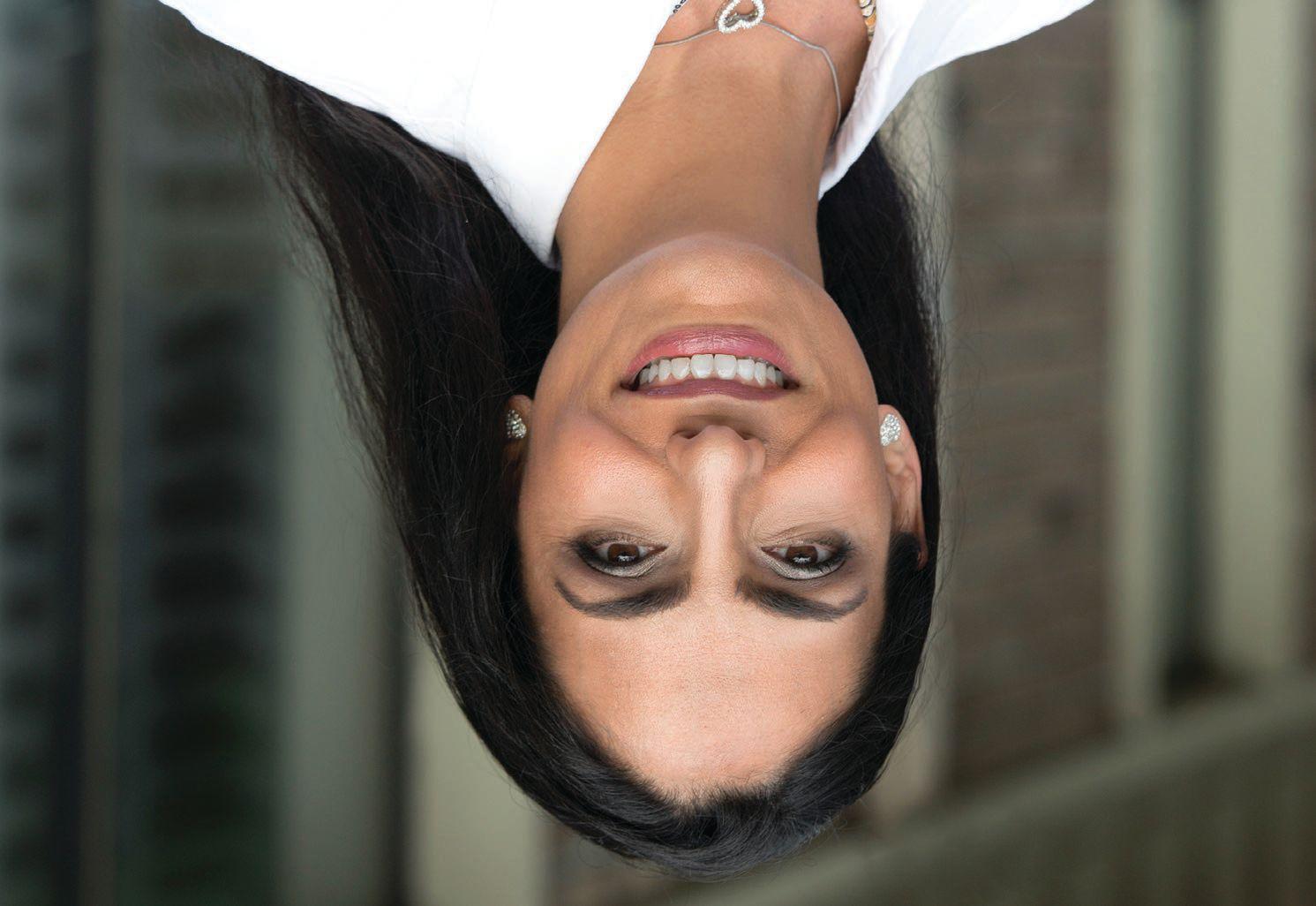
DR. SAMIRA “SAM” MEYMAND has been a practicing oral and maxillofacial surgeon for 15 years. She is a Commander in the U.S. Navy and has served in numerous active duty and reserve officer dental and oral surgery roles for over 20 years. Dr. Meymand is a Board Certified Diplomate of the American Board of Oral and Maxillofacial Surgeons, and is the Past President of Jacksonville Dental Society, co-founded the Jacksonville Women’s Dental Society, and is on the Baptist Health Women in Medicine Executive Board. Dr. Meymand’s practice in Jacksonville, Meymand Oral Surgery, offers the full scope of oral and maxillofacial surgical procedures, various levels of anesthetic and sedation surgery, and spa treatments such as Botox and Juvederm. For the comfort of her patients, she offers various levels of anesthetic and sedation surgery. In addition, her practice provides a LATEX-Free environment for all patients and offers preservative-free anesthetic for those with severe allergies or hypersensitivities upon request. This approach offers a welcoming environment for patients who prefer a holistic approach to their treatment. What types of procedures do you perform as an oral surgeon? The training and experience that oral and maxillofacial surgeons receive makes them highly proficient in the management of bony and soft tissue reconstruction of the face. Common practices and procedures include IV sedation/General Anesthesia of patients in an outpatient setting, removal of diseased teeth and third molar teeth, preparation of bone and gums for dentures, biopsy of soft tissue and hard tissue of the mouth, dental implants, surgical correction of maxillofacial skeletal deformities, orthognathic surgery for developmental growth abnormalities of the face, cleft and craniofacial surgery, maxillofacial trauma surgery, temporomandibular joint treatment and surgery, treatment of cysts and tumors of the upper and lower jaws, and cosmetic surgery and procedures such as Botox and Juvederm. When should wisdom teeth be removed? Per the American Board of Oral Maxillofacial Surgery, the average age range is 16 years old to 19 years old based on the recommendation of their general dentist. Very often, wisdom teeth are removed prior to age 16 or after age 19 due to pain, tooth crowding, decay, infection, periodontal pocketing, or growth issues. The American Board of Oral Maxillofacial Surgery recommends having Oral and Maxillofacial Surgeons remove wisdom teeth. What is the recommended treatment and expected recovery time after removal of wisdom teeth? The recovery period can take five to seven days and in some cases there may still be swelling and discomfort for a week or more. Ice packs, soft foods, and rinsing with simple salt water can aid in quicker healing times. It is important for the first 72 hours not to rinse or disturb clots over the top of removed wisdom teeth. If unusual symptoms like pus discharge, severe pain or a fever occur, your oral and maxillofacial surgeon should be notified right away. While complications such as an infection are rare, they do occasionally occur.
WOMEN’S HEALTH is a complicated subject, one best left to the experts. Fortunately, Northeast Florida abounds with board-certified doctors representing the most sought-after fields in women’s healthcare, such as OB/GYNs, dermatologists, plastic surgeons and cosmetic dentists. Listed here are more than 300 local physicians representing five areas of specialty.
OB/GYN
Obstetrics and gynecology is a discipline dedicated to the broad, integrated medical and surgical care of women’s health throughout their lifespans. The combined discipline of obstetrics and gynecology requires extensive study and understanding of reproductive physiology, including the physiologic, social, cultural, environmental and genetic factors that influence disease in women. Founded in 1951, the American Congress of Obstetricians and Gynecologists (ACOG) has more than 58,000 members and is the nation’s leading group of professionals providing healthcare for women. Here are some of the regional members of the ACOG.
Felix N. Wozuzu Acholonu Joann Gega Acuna Nicole Marie Alexander Frank J. Andres Sarah Campbell Austin Tim Baird Guy Ieshua Benrubi Isidore Daniel Benrubi Kelly Ann Best Judy Louise Bowers W. David Boyd Samuel Elbert Brown Erin Hale Burnett Blake David Butterworth Evaleen Hsieh Caccam Kristin Burns Caldow Suny Mariel Caminero Craig Darren Cantor Caroline J. Carrion Ramon A. Castillo James K. Chafin Anita H. Chen Babu Veerendra Chithriki William Lewis Cody Patrick M. Connor Vanessa Elaine Cullins John D. Davis Gerardo O. Del Valle Isaac Delke Christopher Carl DeStephano Tri Anh Dinh James Henderson Dorsey Daniel Duffy Natasha Eliz Octaviano Espinosa Rozalyn Grace Farmer Love Lina Fouad Felicia Olivier Fox Michael D. Fox Michael Lawrence Freeman Martin A. Garcia Francisco L. Gaudier Kendra Gillespie
Meadow Maze Good Joseph Caldwell Greenhaw Amy D. Greenwald Jennifer N. Guram Andrew Jay Halperin Bashar Fatoohi Hanooshi Richard A. Hartert Jr. Melinda Beth Henne Katrina Elaine Hew Ana Tobar Hicks Kenneth Raymond Hill Jr. Kay F. Holmes B. Freeman Irby James Lewis Jones Andrew M. Kaunitz Mera M. Keenan Ghulam Quadir Khan Sunwook Kim-Ashchi Bettina Anneliese Kohaut Latoya T. Kuester Jennifer Louise Kutcher Lori Ann Leaseburge Ivy Zo Li Fitzpatrick Catherine E. Lindsay Christopher William Lipari Shanan Michelle Loe William Hanover Long Aida A. Malonzo Naicie Ariel Roper Marrow Jill G. Mauldin Jeannine Vaughn Mauney George L. Mayer Deanna McCullough Daniel Charter McDyer Catherine J. McIntyre David Lynn Miller Jr. Kathryn Ann Mince Dawn M. Mormak Richard Lee Myers Meredith Marie Oruc Sarah Elizabeth Paschall Wilford E. Paulk Marta Joan Perez Paul David Michael Pettit Timothy Michael Phelan Ava Eugenia Phoenix Raymond William Quinlan Michelle Quinones-Defendini Edgard E. Ramos-Santos Todd Joseph Rasner Paul Rebenack Lorraine Rodriguez Alexander P. Rosin Nikki Jean Rowan Luis Sanchez-Ramos Lance Andrew Sang Kenneth M. Sekine Marwan M. Shaykh Ruchira Singh Karl H. S. Smith Xujia Annie Song Smith Kelley Erin Holmes Stoddard Julian Stephen Suhrer Staci Lynn Tanouye Charrell Washington Thomas Jason Robert Thompson Frank Edgar Trogolo Jason Lee VanBennekom Kathryn Slott Villano Thomas Raymond Virtue Alyson Pennington Vokes Sarah Elizabeth Weaver Mary Ellen Wechter David Scott Wells Jennifer Anastasia Whitelock Jibri M. Wiggins William Rogers Wooden Carol J. Wyninger Christina Stough Adams Shazia Bashir Kathryn Fipp Bing John Gordon Bordelon C. Cameron Greene Kimberly Manek

Endodontics | Bartram Park Dr. Daniella Peinado has practiced dentistry for over 24 years and specializes in Root Canal Treatment, also known as Endodontics. A native of Brazil, she graduated from the University of Cidade de São Paulo with her Doctor of Dental Surgery degree. She completed a fellowship at the University of Florida College of Dentistry Department of Endodontics and an Endodontics Residency at the Albert Einstein Medical Center IB Bender Division of Endodontics in Philadelphia, PA—one of the most prestigious endodontic programs in The United States. Being a hospital based program Dr. Peinado routinely saw trauma cases (mostly children) coming from the ER. As a result, traumatic injuries of teeth are one of her passions. Dr Peinado designed endodontics | bartram park to reflect her commitment to outstanding patient care and to make patients feel welcome and at ease. The end result is remarkable and you will feel at ease upon entering. The clinical areas include the latest advances in technology including Cone Beam Computed Tomography (CBCT), digital x-rays and microscopes to help develop individual treatment plans. endodontics | bartram park won the Dental Office Design Competition category “Outstanding Specialty Practice” in 2017, an award given by American Dental Association recognizing dental facilities that most effectively express the practice philosophy of its practitioner and demonstrate a thoughtful assembly of design characteristics associated with an up-to-date dental office.
Dr. Peinado has partnered with most dental insurances and her friendly staff will ensure you receive the maximum benefits available to you. Complete transparency is guaranteed from start to finish as Dr Peinado and her staff guide you through your treatment. Dr. Peinado is passionate about education and the advancement of Endodontics. She is a Clinical Professor at the University of Florida College of Dentistry Department of Endodontics and she is an active member of the American Association of Endodontics (AAE), a Trustee of the AAE Foundation Board of Trustees and Chair of the AAE Foundation’s Outreach Program that provides Endodontic care to underserved communities. Daniella S. Peinado, DDS Your Root Canal Specialist EDUCATION: University Cidade de São Paulo–School of Dental Medicine University of Florida–College of Dentistry Albert Einstein Medical Center–The Maxwell S. Fogel Department of Dental Medicine 13241 Bartram Park Blvd., Suite 1601, Jacksonville, FL 32258 // 904.207.7700 www.Endodontics.Dental
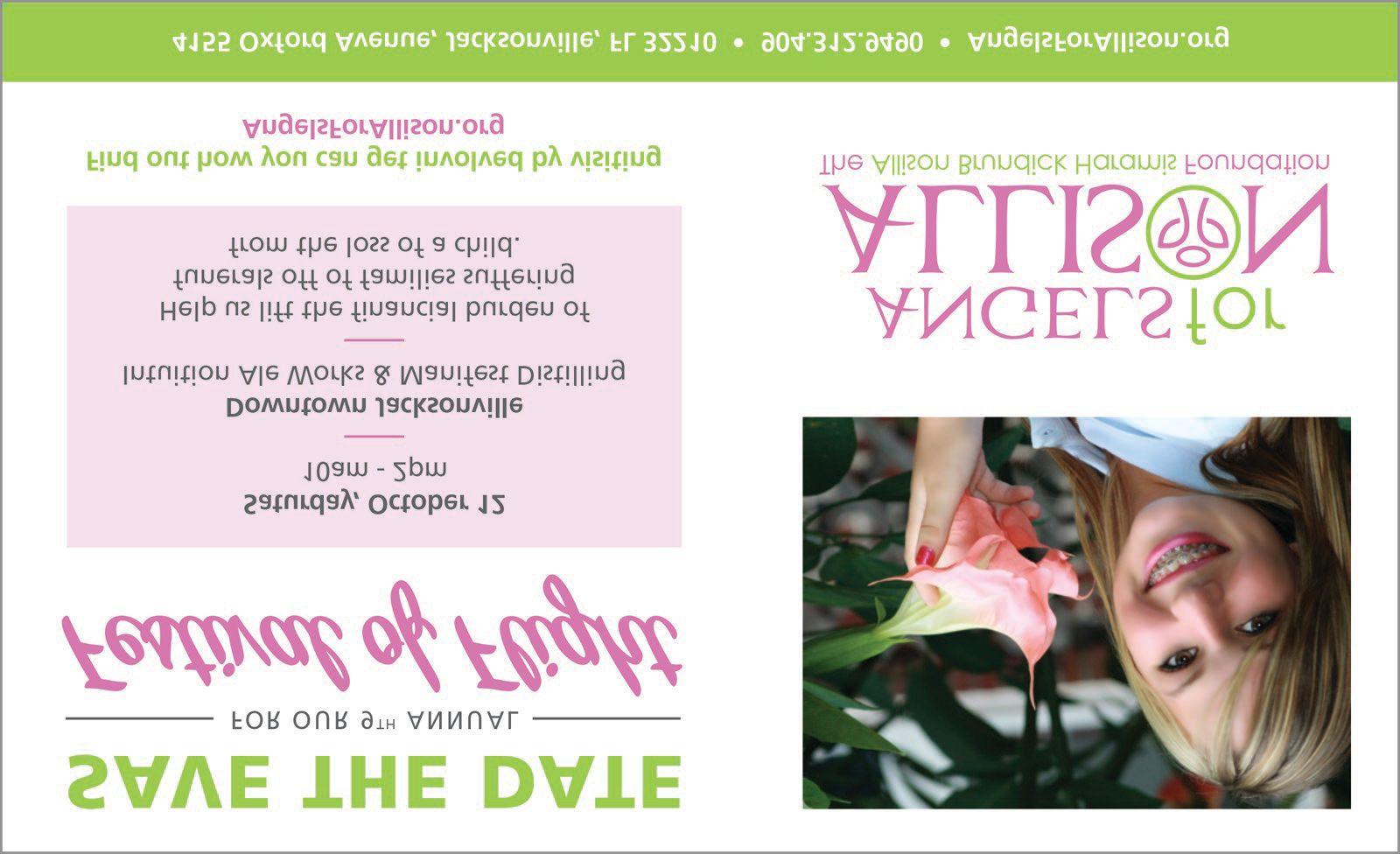
Leandro I. Rodriguez Sayra Chi Sievert Elizabeth Morgan Walsh Samuel Alvin Christian Kari Sproul Kathleen Ann Steepy Karen A. Toppi Kathi A. Aultman Stuard Ronald Caplin Eric Edelenbos David S. Hyler II Curtis James Krebs Meng-Shu Lin Sook H. Marino Richard A. McDauley R. Roland Powers Jr. Nikki Jean Rowan James P. Smith Reda Alami Harrison Wade Barnes Jr. C. Leanne Browning Vijayselwyn Davis Dhas Robert E. Dupree Jr. Kelly K. Jago Sherri L. Maetozo Eric Steven Pulsfus Tom Andrew Searle Susan E. Yarian Frank R. Collier Sharon Marie Desmarais Amy Elizabeth Hearne Rebecca Ireland Moorhead Michael Paul Born Samuel Brandon New Rebekah Melana Richmond Marcia M. Schmidt Amy W. Wrennick
More at acog.org
DERMATOLOGY
A dermatologist is a physician who specializes in skin care. This doctor receives extensive training in treating skin problems and helping to keep skin healthy. When a dermatologist is board certified, it means that the physician has completed a three-year residency in dermatology and passed a twopart test administered by the American Board of Dermatology. Most, but not all, members of the American Academy of Dermatology (AAD) are board certified in dermatology. Fellow membership in AAD is offered to those individuals certified in dermatology by the American Board of Dermatology or the Royal College of Physicians and Surgeons of Canada.
Some dermatologists gain additional training and expertise in specific areas of dermatology, such as pediatrics, surgery or cosmetics, and may go on to have practices specializing in these areas. According to the AAD, there are approximately 60 member dermatologists working in our region.
Kendall Adkisson Tricia Andrews James Bernard Katherine Bodiford Clarence E. Boudreaux Joy Boyne Tamara Brainard Alison Bruce Christina Blue Marquez Brennan Robert Brown Arianne Chavez-Frazier Ann Church John Coppola Sarah Ferrer-Bruker Madeliene Gainers Josep Genebriera De Lamo Sanjiva Goyal David Jonathan Gross Matthew Hall Dreama Jenkins-Pilcher Jonathan Kantor John Kartsonis Karthik Krishnamurthy Pearl Kwong Michael Lutz Chelsy Marty Juan-Carlos Martinez Jean McClintock Joanna McGetrick Russell Metz Alison Moon Christine S. Ng Florence O’Connell Stephanie Ortman Joan O’Leary Ines Kevric O’Shaughnessy Jeffrey Parks Mary Pentel Oliver Perez
JACKSONVILLEMAG.COM / OCTOBER 2019 Juan Rosario-Collazo Douglas Robins Frank Schiavone George Schmieder Leonard Shvartzman Jason Sluzevich Edward Smith Charles Snyder Olayemi Sokumbi Ivette Sosa-Seda Kristen Stewart Leila Tolaymat Laura Elizabeth Towne James S. Trimble Scott Warren Rebekah Wilson
More at aad.org
PLASTIC SURGERY
The mission of the American Society of Plastic Surgeons (ASPS) is to support its members in their efforts to provide the highest quality patient care and maintain professional and ethical standards through education, research, and advocacy of socioeconomic and other professional activities. The ASPS is the largest plastic surgery specialty organization in the world. Founded in 1931, the society is composed of board certified plastic surgeons who perform cosmetic and reconstructive surgery. The society advocates for patient safety, such as requiring its members to operate in accredited surgical facilities that have passed rigorous external review of equipment and staffing. The ASPS represents nearly 90 percent of the board certified plastic surgeons presently practicing in the U.S. (more than 7,000 members).
Patrick L. Basile Robert Burk III Daniel Calloway Loren Clayman Mark Clayman David Csikai Ankit Desai Vaishali Doolabh Michael Duffy Michael Fallucco Timothy Fee Antonio Forte John Harris Hollie Hickman Sofia Kirk William McDonald David Mobley John Douglas Murray John Obi Lewis Obi Joseph Parks IV Galen Perdikis Claude Rumsey Brett Snyder Erez Gabriel Sternberg Sarvam TerKonda Anh Vu James Waldorf William Wallace Jr. Eric Weiss Thomas Zaydon, Jr.
More at plasticsurgery.org
FACIAL PLASTIC SURGERY
The American Board of Facial Plastic and Reconstructive Surgery (ABFPRS) was established in 1986 to improve the quality of medical and surgical treatment available to the public by examining for professional expertise in facial plastic and reconstructive surgery. To carry out this mission, the Board has established a mechanism for the education, qualification, training, review, and certification of surgeons specializing in facial plastic and reconstructive surgery. There are approximately a dozen ABFPRS members practicing in Northeast Florida.
Zeeshan Aziz Juan Garcia Roberto Garcia Deidre Leake Jason Meier David Pearson Saswata Roy Scott Scharer Scott Trimas Jeffrey Wachholz Albert Wilkinson
